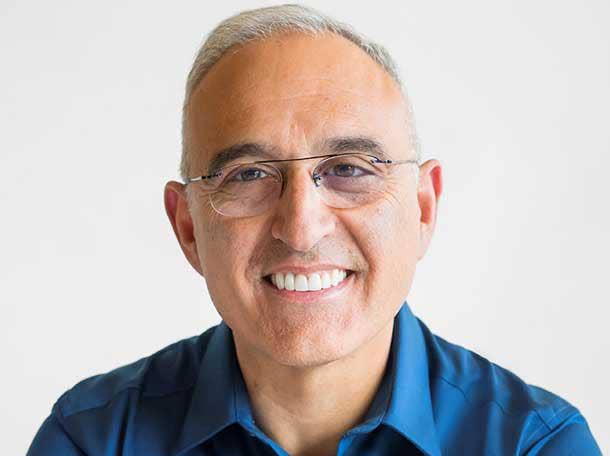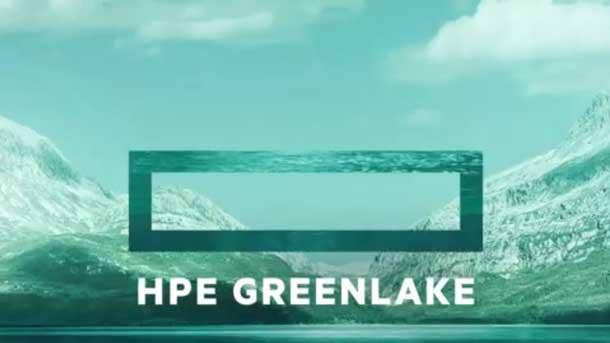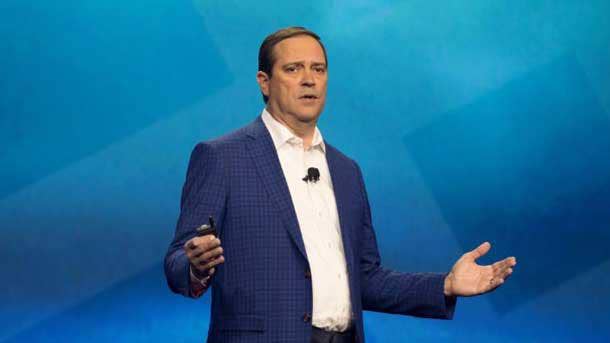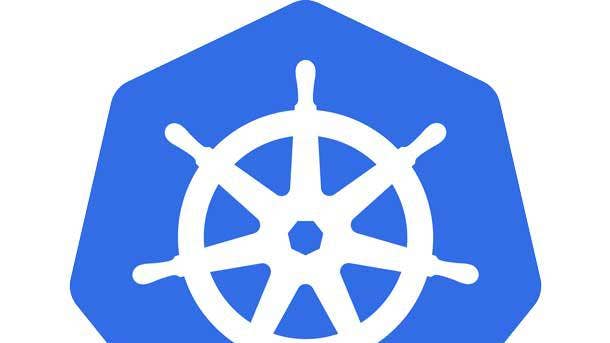Antonio Neri: How HPE Is Besting Cisco, AWS, VMware, Red Hat
HPE CEO Antonio Neri sounds off on how the company’s as-a-service prowess and technology innovation is giving HPE an advantage versus Cisco, AWS, VMware and Red Hat.

HPE’s as-a-service Advantage
HPE CEO Antonio Neri says the company’s as-a-services prowess and technology innovation with offerings like HPE Ezmeral is driving an HPE edge to cloud platform as-a-service advantage for partners that competitors can’t match.
“We offer the most comprehensive portfolio in the market and we bring it together in an as-a-service model where partners not only make money up front but also on the lifecycle of the deal,” said Neri in an interview with CRN after HPE posted better than expected results for its third fiscal quarter ended July 31. “In many cases they get to serve those customers themselves and then add their own services on top of it.”
HPE’s GreenLake on-premise cloud service is now growing faster than public cloud with a “record-breaking” 82 percent growth in service orders in the most recent quarter, said Neri.
“When you look at the performance of public cloud vendors nobody grew at 82 percent,” said Neri. “The reason we are doing well is we provide a true hybrid experience. Cloud is not a destination. It is an experience. Seventy percent of the apps and data are still on-prem, and more and more apps and data is moving to the edge. Customers want a true consumption driven model from edge to cloud. GreenLake offers that in an automated way.”
Microsoft Azure revenue grew at a 47-percent clip in the most recent quarter followed by 43 percent for Google Cloud and 29 percent for Amazon Web Services.
With the addition of other HPE sales added to the GreenLake service orders, the pay-per-use platform is growing at 100 percent clip, said Neri.
HPE signed several of its largest GreenLake orders in its history in the quarter including a blockbuster $27 million digital transformation deal with LyondellBasell – one of the world’s largest producers of plastic resins, said Neri.
In wake of the strong GreenLake results, HPE reiterated its guidance of a 30-40 percent compounded annual growth rate for GreenLake ARR from fiscal year 2019 to fiscal year 2022.
Overall in the quarter, HPE posted better than expected results with non-GAAP earnings of 32 cents per share on a 13 percent sequential increase in sales to $6.82 billion. That is well above the Wall Street consensus of 24 cents per share on sales of $6.14 billion, according to Zacks.
“It was a good strong quarter for us,” said Neri. “We see the results of the hard work we put in in the last 90 days together with our partners. I am very pleased with the outcome.”

What kind of growth are you seeing in GreenLake services orders versus public cloud?
We had a record-breaking performance for HPE GreenLake cloud services. We saw 82 percent year over year growth and that is only the consumption side of the business. GreenLake includes other things that do not translate into that ARR (Annualized Revenue Run Rate) metric. We want to be direct and transparent. But if you add the rest it was actually 100 percent growth. The ARR metric bookings were up 82 percent.
When you look at the performance of public cloud vendors nobody grew at 82 percent. The reason we are doing well is we provide a true hybrid experience. Cloud is not a destination. It is an experience. Seventy percent of the apps and data are still on prem, and more and more apps and data are moving to the edge. Customers want a true consumption driven model from edge to cloud. GreenLake offers that in an automated way. That is why we saw some of the largest deals we have ever signed. I cited one of them (a $27 million deal with LyondellBasell – one of the world’s largest producers of plastic resins). But actually we signed multiple deals. Some of them I can’t reveal the names of.
I am very, very proud of that performance. Obviously we can’t do this without growing with the partners. All of the growth with GreenLake is absolutely fueled by partners.

How often is GreenLake going head-to-head against public cloud in an on premises versus off premises comparison?
The vast majority (of deals) for sure we see customers putting us in a bake off against public clouds. What customers realize as they get to a larger scale is that it is cheaper to keep the workloads and most importantly the data on prem and yet automate everything and get the same cloud experience and pay the same way as if they moved to the public cloud. It is a cost benefit and an experience benefit.
Obviously they get out of the business of running the cloud. With GreenLake we guarantee services levels and outcomes so their IT professionals don’t need to spend time on that versus the public cloud where they still have to curate those workloads and make sure they are performing to the levels they want. With GreenLake we manage that and take care of that for them. So it is a unique value proposition. It is all software driven.
We introduced our new cloud services two months ago at Discover (next generation GreenLake point and click services including prepackaged offerings virtualization, infrastructure as-a-service, container management, machine learning operations, data protection and connectivity as-a-service).

What did you think of Cisco CEO Chuck Robbins (pictured) recently saying he plans to move the majority of the Cisco portfolio to as-a-service?
I actually commented on this in my remarks (on the earnings call). Now everybody is claiming to move to everything as-a-service. We declared that several years ago and we have been working on building those capabilities.
In the second quarter, we said we had an opportunity to optimize our costs and reallocate our resources in the right place. Well everybody is now announcing similar programs after announcing their results.
In the end when you have a conviction about something you go do it. That is what my mantra is. We have a conviction about our strategy. The results and the demand is driven by what the customer wants and needs.
We can’t look at the competition. We have to stay focused on our customers and partners. When you do that that is when you get better outcomes.

Given that, what is the difference between the ability for partners to make money in as-a-service versus Cisco?
We provide a true edge to cloud platform for our partners. Obviously Cisco is a very strong company. They have changed industries when you look at the last two decades. But they play in one specific area which is connectivity and then they wrap their portfolio around that connectivity with applications and some software and services.
We provide to our partners a true end to end experience from the edge – where obviously connectivity and security is the first step- and then we bring the cloud to the edge so they can monetize not just connectivity and all the services there but they can monetize even beyond that. Then in the core business we offer the most comprehensive portfolio in the market and we bring it together in an as-a-service model where partners not only make money up front but also on the lifecycle of the deal. In many cases they get to serve those customers themselves and then add their own services on top of it. That is why the GreenLake Central platform is so essential because with one point and click you can now provision the cloud whereever you want it including connectivity with Aruba Central. Obviously we are open with the APIs (Application Programming Interfaces) so partners who have their own services can write to those APIs and then ultimately they can own that relationship with the customers. That is very unique and very revolutionary in many ways.

What is the difference between how HPE is leveraging Kubernetes versus AWS, which just announced AWS Controllers for Kubernetes as an open source project?
I am glad that AWS stated that because it validates that there is no reason to lock customers in. Our approach to Kubernetes has been to take a true open source approach and then solve the challenges that customer have with containers which are two-fold: security and persistent storage connectivity. The data fabric aspect of containers is very hard to do. That is why we have introduced HPE Ezmeral because HPE Ezmeral solves three fundamental problems:
Number one is the ability to run both cloud native and non cloud native worlds – meaning stateful and stateless workloads in the same stack. That in itself is massive because you don’t have to create siloed infrastructures for those types of workloads. You can run it all on the same stack.
Number two is operations. With the acquisition of BlueData we integrated with our open source Kubernetes with all of those automation tools including HPE InfoSight (predictive analytics). That means lower opex (operating expenditures) because customers don’t need to be in the run (IT side of the business). That way they can free up their resources to focus on the innovation side (of the business).
Number three is the data. We always say that at the end of the day data is everything. We have the ability to run big data workloads because we have the fully integrated data fabric with the acquisition of MapR. That is a very unique and differentiated (capability).
We package all of this in a truly modular portfolio of HPE Ezmeral and you can consume it both as a license or as a part of HPE GreenLake Central because that is where you provision the workloads. That is an opportunity for partners because they can sell it as-a-service or they can sell it as a virtual license.
Also customers don’t want to pay a (VMware virtualization) tax anymore. We have true differentiation and are very excited about the opportunity. We are in the early innings but we are already winning deals because of the differentiation we have with HPE Ezmeral.

Red Hat just announced OpenShift 4.5 with OpenShift virtualization which is basically hybrid workloads running cloud native and virtualized workloads. What is the difference between HPE’s Kubernetes and Red Hat?
HPE is the true cloud native approach for both type of workloads and you don’t need to pay the (VMware) taxes. When you go to a Red Hat or VMware and by the way VMware is doing the same thing with the Tanzu platform- you still need to subscribe to these massive (virtualization) licenses. You can’t run just that thing. You have to buy the rest of the stuff. We don’t need that. You get the new and most modern architecture without paying the incremental cost.